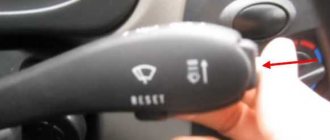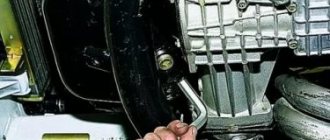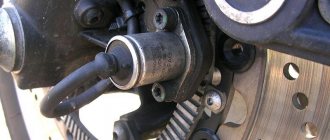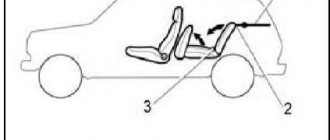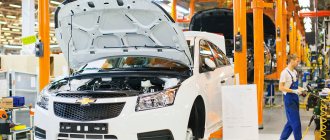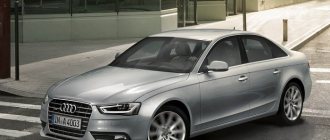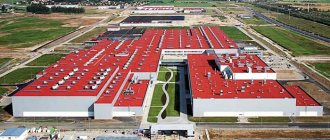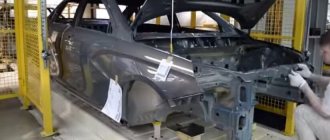The Swedish concern, which produces high-quality and majestic Volvo cars, has become one of the most influential in the European premium car market. This happened in the last seven years, but from 2000 to 2007 the concern did not develop, offering customers the same models with old engines. The secret of the Swedish car company's success lies in its alliance with the Chinese. The formal Geely corporation simply bought out the Swedish enterprise, but the agreement is more like a merger.
The Chinese made a commitment not to rename the brand, to preserve the European Volvo brand, the country of origin should remain Sweden, and Geely does not have the right to use the concern’s technical developments in its cars. I wonder if the Chinese are honoring the signed agreement?
In which countries are Volvo cars assembled?
There is a misconception that Volvo cars are assembled in Norway, Switzerland and even Germany. In fact, the brand's main European production facilities are concentrated in the Swedish city of Torslanda, as well as the Belgian Ghent.
Until 2013, a company operated in Sweden in Uddevalla, where the C70 model was produced. There are no other Volvo car assembly plants in Europe. In China, the assembly of Swedish cars is organized at a plant in Chengdu.
After the merger with the Chinese Geely, production volumes in Gothenburg did not decrease, but even increased. This was facilitated by significant Chinese investment.
Advantages of the merger:
- Serious investments made it possible to develop new cars, technologies and expand the brand’s model range.
- Allowed us to exchange experiences with designers from Geely.
- The Chinese market opened for Volvo, where its products were exempted from duties.
- The company's staff expanded, production lines were updated and automated.
| Location | A country | Models | VIN company sign |
| Torslanda (Gothenburg) | Sweden | V70 XC70 S80 XC90 V60 | 1 |
| Ghent | Belgium | C30 V40 S40 V50 S60 XC60 | 2 |
This is interesting: How to park on a race track
Chinese Geely cars after cooperation with the Swedes
Immediately after the merger of European and Chinese manufacturers under the roof of one concern, Geely had new models that were three heads higher than their predecessors. In fact, the entire model range has changed, new engines began to produce more horses, requiring less fuel. And the appearance of the Emgrand series has greatly advanced.
We invite you to enjoy the video test drive of the new Emgrand EC7
Video:
A crossover, which had not been announced before, even appeared in the Geely model line. Such changes are associated with the following development options for the company:
- despite the ban on the use of Volvo technologies, the Chinese pulled certain developments of the Swedes to their side;
- as a result of bilateral cooperation with European engineers, new developments were obtained;
- the company received a good income-generating asset and was able to invest in its own production;
- Engineers from Sweden were invited to work in China.
The last assumption is a tested and proven fact. But Geely denies the fact that this is related to the development of the successful Engrand series of cars. However, for the consumer there is no difference. If a company produces good cars, let it take technology where it is more convenient for it. What is more important for the consumer is how high-quality a car he can purchase at the dealership. That is why the Swedes today are quite happy with their seven-year cooperation with the Chinese.
The plant in Gothenburg is growing and developing, the brand is acquiring new models, and the Geely corporation is fulfilling all its main promises.
Second generation Volvo XC90
Initially, the company planned to release the new XC90 in 2009-2010, but due to the merger with Geely, the dates were postponed.
The world debut of the model took place in 2014, and mass production began in 2015 at a plant in Gothenburg. The first cars arrived to their customers in the spring of 2015. For the brand's birthday, the Swedes released a special version called First Edition with a circulation of 1927 units.
The cars sold out in 47 hours.
In 2016, the model was awarded the North American SUV award. The winner is determined by a commission of independent journalists. The previous version of the car experienced similar success in 2003. In addition, the crossover showed the best results in its class according to Euro Ncap.
March 30, 2017
If you have questions, ask them on our forum!
And share links on social networks!
history of the company
The company was founded by Assar Gabrielson and Gustaf Larson in 1915. In fact, it was a subsidiary of the popular bearing manufacturer SKF. The first production car, the Jakob OV 4, left the factory gates on April 14, 1927. It had an engine with a capacity of 28 horsepower and a top speed of 90 km/h.
The country is beautiful! Who becomes the president of the concern in 1956? Of course, Gunnar Ingellau! He is a Doctor of Mechanical Engineering and Economic Sciences. During his tenure, the company flourished. Export of Swedish cars to the USA starts in 1956. In the United States in 1957, 5,000 Volvo cars were sold. Car production volume is increasing. In 1956, 31,000 copies were manufactured, and in 1971, 205,000 units were produced.
The country has a temperate climate, mainly due to the Gulf Stream. It's very pleasant to work here. It should be added that Nils Ivar Bolin also worked tirelessly at Volvo. He is the author of the three-point seat belt. For the first time in the world, the Volvo PV 444 and P120 Amazon brands were equipped with this element.
The P1800 model is designed as a two-seater sports coupe. It was released in 1960. And production of the Volvo-144 began in 1966. This particular model was equipped with a dual-circuit braking system. And it was here that the deformable zones of the body were installed. This is an amazing Volvo! Which manufacturing country is capable of inventing such a candy? Of course, only Sweden.
In 1976, the creators of Volvo developed Lambda Sond oxygen sensors. In the same year, the exhaust gas catalytic converter was created.
Volvo Personvagnar's passenger car division was sold to Ford in 1999. The concern was able to sell the division for $6.45 billion. Volvo Personvagnar AB is known in the USA under the name Volvo Cars. And since 1999, this branch has become a division of the Ford concern. But in December 2009, Ford announced the sale of Volvo Personvagnar AB to the Chinese company Zhejiang Geely Automobile. The branch is now worth $1.8 billion. On March 29, 2010, the Chinese company officially signs the documents. These are papers for the acquisition of the Volvo Cars brand from Ford Motor. The deal was completed on August 2, 2010.
How we are working
The Volvo Group plant in Kaluga produces a wide range of commercial vehicles for various types of business. Since 2014, trucks of the new Volvo model range have been produced here: FH, FM and FMX.
The main suppliers of parts and components are our partners from Sweden, France, Belgium, Lithuania, Germany, Brazil, and India. Currently the company is focusing on finding local suppliers.
All Volvo trucks are manufactured to global quality standards and customized to meet specific customer requirements. Each order is identified by the vehicle chassis number. Many components and parts are individually marked for a specific chassis.
Volvo in Russia
Official sales of Volvo cars in the USSR started in 1989. It should be noted that truck tractors, so necessary for Sovtransavto, have been purchased since 1973.
The Volvo brand... The manufacturing country is located in Northern Europe, in the center of civilization. Currently, the Volvo concern in Russia is also represented by VFS Vostok LLC.
built a new plant in Kaluga. The launch of this production took place on January 19, 2009. The production capacity of this plant is very large. It amounts to 15,000 trucks per year. Installation of Volvo FM and Volvo FH models is planned here. This is the first full-scale production of commercial trucks of a foreign brand in the Russian state. A little later, Volvo Truck Center-Kaluga was built on the Volvo factory territory. This center started operating in the summer of 2009. Volvo Holding has adopted a comprehensive transport solution. Now production, sales and service are carried out in one place.
Volvo concern and its subsidiaries
The Swedish concern Volvo has an extensive product range. This manufacturer supplies parts, engines, and components for trucks to the world market. But those who want to purchase a Volvo passenger car should know that in the past the right to produce them was sold to the American concern Ford. This offshoot was called Volvo Personvagnar. Not long ago, Ford considered it necessary to get rid of this process and sold shares in the production of Volvo passenger cars to the Chinese automobile concern Geely.
Volvo has several branches in Europe. The car plant that produces cars under this brand is located in the city of Torslanda in Sweden. The following models come off its assembly lines:
- XC70,
- XC90,
- V60,
- V70,
- S80.
There is a plant in the home town of Uddevalla that assembles C70 cars. There is a Volvo branch in the city of Ghent in Belgium. 6 Volvo models are produced here, which are numbered 2 in the VIN code.
This is interesting: How often to change the oil in a Chevrolet Aveo gearbox
Volvo name
Volvo is translated from Latin as “roll”, “rotate”, “twist”, etc. At first it was the slogan of SKF, because it was based on the production of bearings, and they must spin well. Regularly used on advertising posters, Volvo has become an independent name that almost every person in the world knows.
Today, the Volvo trademark is jointly owned by two concerns - Volvo itself and Volvo Personvagnar, which belongs to the Chinese concern Zhejiang Geely Automobile. Also under the leadership of Volvo there are such brands as:
- Mack
- Nissan Diesel
- Nova Bus
- Prevost
- Renault Trucks
The modern Volvo concern is a Swedish supplier of massive vehicles - buses, trucks and construction equipment, as well as engines for marine vessels and space components. The structure of the concern is divided into 8 production companies and business divisions in the amount of 11 elements.
Among the production divisions there are those that are engaged in the development and production with further maintenance of trucks, bus chassis and buses, construction and space equipment. Separate divisions create aircraft and rocket engines, as well as engines for sea vessels. All this is produced under the Volvo, Nissan and Mack logos. It is noteworthy that there is also a financial division, which, accordingly, provides financial services.
Among the business units there are companies involved in supporting young companies related to Volvo. Others are involved in production planning, purchasing and investment (Volvo 3P). Separate divisions are engaged in scientific research and development of innovations, which, obviously, greatly pushes them ahead among their competitors. Equipped with good electronics, Volvo Technology has embedded technology specialists and researchers who focus on developing human-system interaction to create environmentally friendly, safe products and services that meet customer demand.
Cabin welding and painting plant
On June 25, 2013, the first stone was laid in Kaluga for the future Volvo workshop for welding and painting cabs with a capacity of 15,000 units. in year. The opening took place on November 27, 2014, investments in the project exceeded 90 million euros.
The opening of a plant for the production of cabins is a serious contribution to achieving the goal of localizing production.
The territory of the plant is 2.96 hectares, the area of production and warehouse premises is 25,000 sq. m. m. The production site is divided into three main areas: a warehouse, a workshop for welding cabins from stamped elements, and a painting shop.
Welding of cabins takes place in several stages. At the end of each of them, the product is thoroughly checked. The spot welding method is used to connect the cabin elements. Plasma welding is used for doorways. The second method is completely robotic. At the final stage of assembly, doors, hood, brackets and other components are installed.
Once the welding cycle is completed, the cabin is sent to the light tunnel to check the quality and compliance with Volvo Group standards. In it, the cabin body is examined for scratches, welding splashes or scale.
The cabin then goes to the paint shop. Here it goes through several preparatory stages:
- Cleaning and degreasing;
- Activation;
- Phosphating;
- Application of cataphoresis coating.
The process of applying cataphoresis coating occurs under the influence of high voltage current. According to the process technology, after applying the cataphoresis coating, the cabin must go through a furnace (up to 180 ° C) and only then enters the line for grinding the protective layer (cataphoresis), the line for applying sealant and sound insulation, as well as the control line.
Next, it enters the paint application chamber. The process of applying paintwork is completely robotic.
The organization of work processes and workplaces is fully consistent with the basic principles of lean manufacturing.
World class quality
Our products comply with global quality standards. The Russian plant is certified in accordance with ISO 9001 and 14001. Domestic-assembled Volvo trucks are absolutely identical to those produced in Sweden, Belgium, Brazil and other countries. Quality requirements are laid down in our production process instructions and control documentation. Designers and service department specialists are guided by the same requirements, which allows us to ensure proper quality throughout the entire life cycle of the product.
The plant has implemented the Volvo Production System, which is based on the concept of lean production, and also applies a quality control system.
Every Volvo truck undergoes a functional test. The production line tests the correct assembly and functionality of components such as:
- Buttons;
- Valves;
- Light bulbs;
air suspension (calibration).
At the final stage, pneumatic systems are checked for leaks, and traction and dynamometer indicators are tested. Tested:
- Brake systems;
- Speed;
- Power;
- ABS/EBS performance.
At the end of the final stage, additional visual and functional checks are carried out, as well as documentation checks. Only after this the truck is assigned GOK (Green OK) status. 100% of produced cars have this status.
Be transported to the Volvo Group Russia plant in Kaluga
9d24f3d6-df5e-498a-a639-29c6c6a703b6
Production
Many people are confused about which country produces Volvo. This is due to the company's extensive product line.
The Scandinavian Peninsula is home to one of the world's most renowned manufacturers of reliable vehicles. Volvo's first producing country is Sweden. Since 1927, it is here, in the city of Gothenburg, that the best cars, parts and components come off the assembly line.
You can find out what Sweden is famous for, besides cars, from our material.
The company specializes in manufacturing:
- trucks;
- passenger cars;
- agricultural and forestry equipment;
- engines for various purposes.
The concern successfully carried out its activities in the automotive industry. Until 1999, the company was producing passenger cars, but then Volvo Personvagnar became the property of Ford, another giant in car production, and later to the Geely concern (China). Today there are several areas of activity of the concern.
Despite the fact that the company that owns the Volvo Cars line is located in China, the main production facilities for cars and trucks are still located in the European Union.
European factories of the concern
The main plant remains in Gothenburg, Sweden. This is where cars were originally made. Today the following models are produced:
- XC90;
- V60;
- S80.
The Gothenburg facilities make cars for the markets of Europe and the USA. The share in the total production of all vehicles is about 11%.
Not far away, in the city of Skövde, Volvo power units are produced. The engines are distributed all over the world, to countries where the parent company's facilities are located. The conveyors in the city of Olofström produce body parts of the Scandinavian brand.
In addition, high-quality products are made in other European countries. So, in Belgium, at the Volvo Cars Ghent plant, located in the city of Ghent, the following models are assembled:
- C30;
- V40;
- S40;
- V50;
- S60;
- XC60.
It is the units assembled in Ghent that have the reputation of being of the highest quality. This is all thanks to the fact that the enterprise is fully equipped with a closed type of production. The plant produces about 33% of cars from the total production volume.
In Torsland and Uddevalla in Switzerland, models come off the assembly lines that make up the lion's share of total production - 20%:
- V70;
- XC70;
- S80;
- XC90;
- V601;
- C70.
In addition to the factories presented above, the concern owns bus production in the UK and produces vehicles for various purposes in the USA and China. Assembly factories operate in India and Malaysia.
In Copenhagen, the Volvo concern has a research center where they develop and test innovations in technical transport units. A team of specialists is working on the creation of new models and the introduction of innovations, making the comfortable, bladeless and environmentally friendly vehicles of the Swedish brand even better every day.
Factories in Asia
Since 2013, the company begins producing vehicles at production facilities in the cities of Chengdu and Chongqing in China. Cars are made here for the country's domestic market. The opening of a production base in the country made it possible to significantly reduce the cost of car models due to the absence of customs duties. More than half of all production comes from the Chinese market. They make the following car models:
- S40;
- S60;
- S90.
Since 2015, the concern has been exporting cars to the USA produced in Chinese factories.
Volvo in the USA
The largest market for Volvo vehicles is in North America. Residents of the continent have long been accustomed to the reliability of cars and their high technical characteristics. The largest plant producing passenger vehicles of the brand is the plant located in Ghent. It accounts for about half of the company's total turnover.
However, today the concern has its own plant in South Carolina, where it produces models of the 60th class, but it is planned to produce the 90th class as well. This made it possible to fill the American market with reliable and recognized cars. Previously, Volvo only had a research center in the United States.
We described in our article what else you can bring from the USA.
Creators of Volvo
The Volvo Cars company, as contemporaries note, was created by people, and all innovations were invented by man. Assar Gabrielson and Gustav Larson first told the world about Volvo.
They once studied together - Gabrielson became a Bachelor of Science in Economics, and Larson received an education as a design engineer, strengthening his skills with considerable experience working among the British breeders White & Poppe. In 1924, Gabrielson invited his longtime friend Larson to create a car manufacturing company. At first, Gustav dismissed the idea, not taking it seriously. However, after a few months, Assar insisted on discussing the business plan more specifically. At the end of 1925, an agreement was signed to develop the first car.
A few years later the company was founded. It is noteworthy that the concentration on cars with an increased level of safety was initially, and perhaps the reason for this was the death of Gabrielson’s wife in a car accident.
Company engineer Nils Bohlin equipped the car with a three-point seat belt. This idea, according to statistics, has saved millions of lives of motorists involved in accidents. But it is also important that Volvo Cars did not claim individual rights to use the idea, which means that other automobile companies could use it in their designs.
The creators of the car were so concerned about the safety of drivers and passengers that it was they who equipped the car with a rear-facing child seat. The main idea was taken from the position of the astronauts when they were launched into space - at that time they were still in a supine position, which correctly distributed the load during acceleration. A few years later, a cushion was added to the child seat, and even later it was embedded inside the seat.
Volvo developers also thought about the environment. It was for this brand that the lambda probe was invented. The design is an oxygen sensor that monitors harmful emissions, reducing them by 90%. Again, the idea was not customized so that other brands could use it. Today, most gasoline-powered cars are equipped with a catalytic converter with a lambda probe.
It was Volvo's car makers who developed the Side Impact Protection System (SIPS). Thus, being part of the vehicle structure, the high-strength structure absorbs mechanical energy. It includes materials inside the cabin, a floor cross member, and reinforced seats. Innovation continued further, and years later, side-impact airbags were invented by Volvo Cars engineers.
The end of the 90s was marked for Volvo with two innovations at once. Whiplash is a very painful condition that occurs when cars collide on the road. Its treatment is expensive and takes a long time. The creators of Volvo cars tried to help drivers avoid this disease by minimizing possible injuries while driving. Anti-whiplash protection features a headrest made of durable material, matched to a special seat structure that is designed to provide even support to the body during a collision. Statistics showed that this update cut injuries in accidents by half.
Engineers have worked hard to create inflatable curtain airbags. They are located in the ceiling, extending throughout the cabin. In the event of a side impact, the curtains inflate in 0.025 seconds, absorbing about 75% of the mechanical energy. This reduces the risk of the driver and passengers hitting their heads on the side walls of the cabin.
The early 2000s saw a surge in interest in SUVs, but this also increased the incidence of vehicle rollovers. Volvo has developed a rollover protection system (ROPS) to improve the stability of its SUVs electronically. The car's structure has also been modernized, strengthened and secured with a boron steel roof frame.
The introduction of electronics into a car has made it possible to calculate the impossible. For example, information about a dead zone. Thus, cameras and radars in a modern car model monitor the situation around it. If another vehicle enters the blind spot, a warning light near the side mirror illuminates, warning the driver not to make sudden movements to avoid an accident.
It is noteworthy that in traffic jams, when cars are barely moving, minor accidents occur, which can still cause some damage to the driver and the vehicle. The creators of Volvo helped avoid this by equipping the car with the City Safety safety system, consisting of scanning lasers. They scan the car ahead and calculate the possibility of a collision. If the driver does not brake, the security system sends a command to the car, and it slows down on its own. This works up to a maximum speed of 50 km/h.
Volvo can also detect pedestrians that the driver cannot see. Radars and cameras scan the path, and if a pedestrian appears there and the driver does not brake, the car does it itself.
Russian Volvo plant
Russia has become another market into which the company has introduced its capabilities. Today in Kaluga the production of the following trucks has been launched:
- FH;
- FM;
- FMX.
Suppliers of components to the plant are Sweden, Belgium and Germany, France and India. The Volvo Trucks concern, whose policy is aimed at selling products in the countries where they are produced, provides the Russian market with reliable freight transport.
The Russian manufacturer plans to produce up to 7 thousand trucks per year. Despite the consequences of the crisis, well-established truck manufacturing activities have been maintained in Kaluga and continue to provide employment for thousands of workers.
The company makes big bets on heavy engineering and special transport. The Kaluga plant is the most modern and modernized of all units in the Volvo Trucks line.
Volvo Trucks Corporation
Let's consider one of the industrial companies owned by the Volvo concern. The manufacturing country, Sweden, is proud of its brainchild, its automobile company. Volvo Trucks Corporation is one of the world's leading manufacturers of heavy trucks. This company was founded by Gustaf Larson and Assar Gabrielson in 1916. It is a subsidiary of the popular bearing manufacturer SKF.
The first production car left the factory gates in 1927. The company gained complete independence from SKF in 1935.
At the beginning of 1928, the first truck appeared. It was called "LV Series 1" and was an incredible success. A two-liter four-cylinder engine was installed on it. The engine power was 28 horsepower.
Can anyone forget the Volvo? The country of origin will definitely remind you of this concern on occasion. After all, in terms of volume on the world market, it is in second place. In 2006, Volvo Trucks sold 105,519 units of trucks.
Volvo trucks are considered comfortable and safe. The global international corporation Volvo Trucks Corporation includes industrial and design centers located in the USA, Brazil, Sweden and Belgium. It includes an incredible number of assembly companies around the world. Some businesses represent the corporation as a co-founder along with local production groups. Of course, there are organizations directly owned by the Volvo Group.

